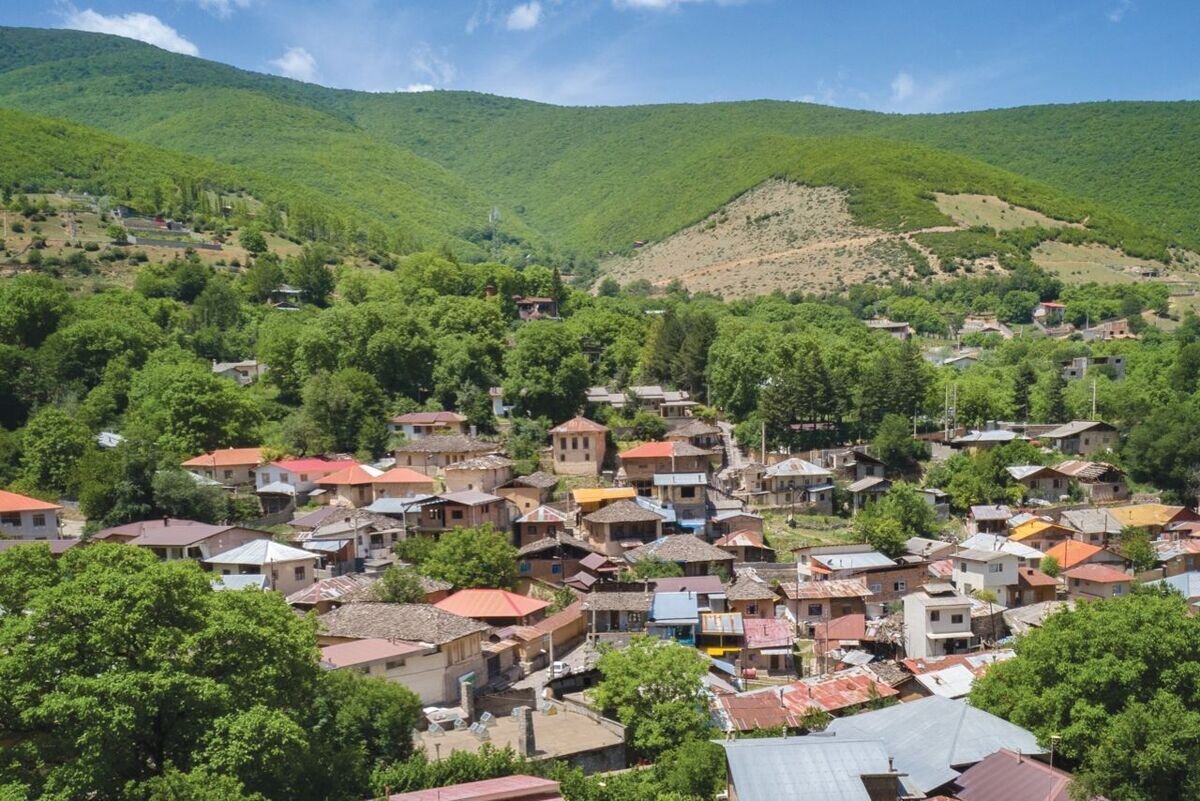Tehran – The local legend of “Mina and the Panther” has been chosen as the iconic brand of Candelos, a scenic village located at the foot of Mount Alborz in northern Iran.
According to Regional Tourism Director Hossain Izadi, the captivating folklore is being adopted with an environmental focus to represent Candelos on a global scale.
During a recent visit to the village on Monday, Izadi announced the establishment of a dedicated working group to pursue Candelos’ nomination on the UNESCO World Heritage List.
“The story of Mina and Panther not only reflects our cultural depth, but also conveys strong environmental themes, making it an ideal story for international branding of the village,” Izadi said.
He also noted that wooden signs based on local dialects have been installed throughout the village, with mud smears applied to create a unified visual harmony throughout Candelos.
Legend-inspired artwork and mural paintings have been developed as part of this branding initiative. A file compiling some of these legendary and heritage elements – created with input from the local community – has already been submitted to the Ministry of Cultural Heritage for official recognition.
The story of Mina and the Panther is an unforgettable legend of love that has been handed down for over a century among seniors in Candelus. According to local lore, Mina is an orphan girl with ruby red eyes, living alone in a modest home, and still stands as a popular tourist spot in the village today. Because of her unique eyes, she was often shunned by other children, which deepened her sense of isolation.
According to legend, Mina often challenges the forest to gather fires, singing loudly to overcome her fear and loneliness. One day, a wild panther, fascinated by her voice, began chasing after her, eventually returning to her home to follow her path. Their unlikely encounters were united by shared loneliness and emotional bonds, and blossomed into surreal friendships. Over time, Panther helps Mina carry the fire during the day, quietly visits her in the evening, and peers through the window to hear her song.
Eventually, the village began whispering about the mysterious visit of the Panther. Mina on the ladder is preserved in the Candelos Museum, the iconic artifact that now stands for legend, the night she first met Panther.

Kandelous, often referred to as “lost paradise,” offers a blend of nature’s splendor and cultural mysticity. With initiatives such as newly established environmental houses and storytelling-based tourism, authorities aim to attract green tourists and culture-seeking as well.
“We are also working to solve the infrastructure challenges in the region and are introducing villages on an international platform focused on education,” Izadi added.
He believes that this branding through folklore will not only protect the village’s intangible heritage, but will also create sustainable tourism and global recognition.
Candelos is one of Iran’s oldest settlements, with traces of civilization dating back to the Islamic period. During the Qajar dynasty, the village was recognized and Shah Qajar of Nasser al-Din reportedly passed through and praised the craftsmanship of local metalworkers.
Village architectural charm – the character of the wooden frame windows, gable rooftops and winding stone alleys reflect its deep heritage. Unlike many modernized settlements, Candelos preserved its historic texture, allowing visitors to experience firsthand the elegance of Iranian countryside.
morning

